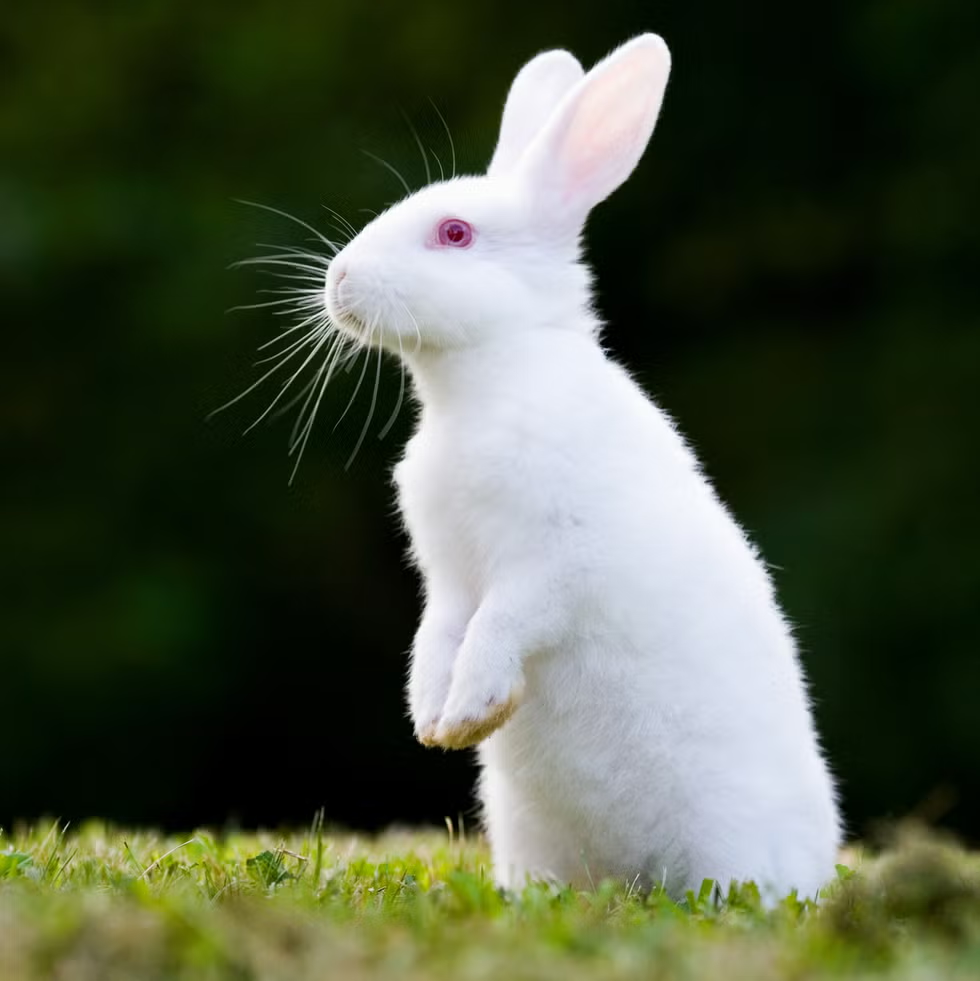Rabbits are more than just adorable, floppy-eared companions; they’re bundles of joy that bring warmth and playfulness to any home. Whether you’re a first-time pet owner or a seasoned rabbit enthusiast, there’s something magical about finding the perfect rabbit breed to suit your lifestyle. But with so many breeds available, how do you decide which one is right for you?
This blog dives into the world of rabbits, exploring the top five most popular breeds while covering everything you need to know about their personalities, care, and suitability as pets. Plus, you’ll learn why these delightful creatures have become the stars of countless households worldwide.
Understanding Rabbit Popularity
Why are rabbits such sought-after pets? It’s not just their irresistible cuteness. Several factors contribute to their allure:
- Temperament: Rabbits are known for being gentle and affectionate, often forming strong bonds with their human companions.
- Size and Appearance: From petite, palm-sized rabbits to large, huggable breeds, there’s a rabbit for every taste.
- Care Requirements: While rabbits do require dedicated care, their upkeep is often more manageable compared to larger pets like dogs.
- Family Friendly: Many breeds are ideal for children, making them a popular choice for families.
However, there are still misconceptions about rabbits. They’re often thought of as “low-maintenance” pets, when in reality, rabbits require attention, proper diet, regular vet visits, and enrichment to thrive. With these essentials in mind, let’s explore the most popular rabbit breeds that can light up your life.
Top 5 Most Popular Rabbit Breeds
1. Dutch Rabbit
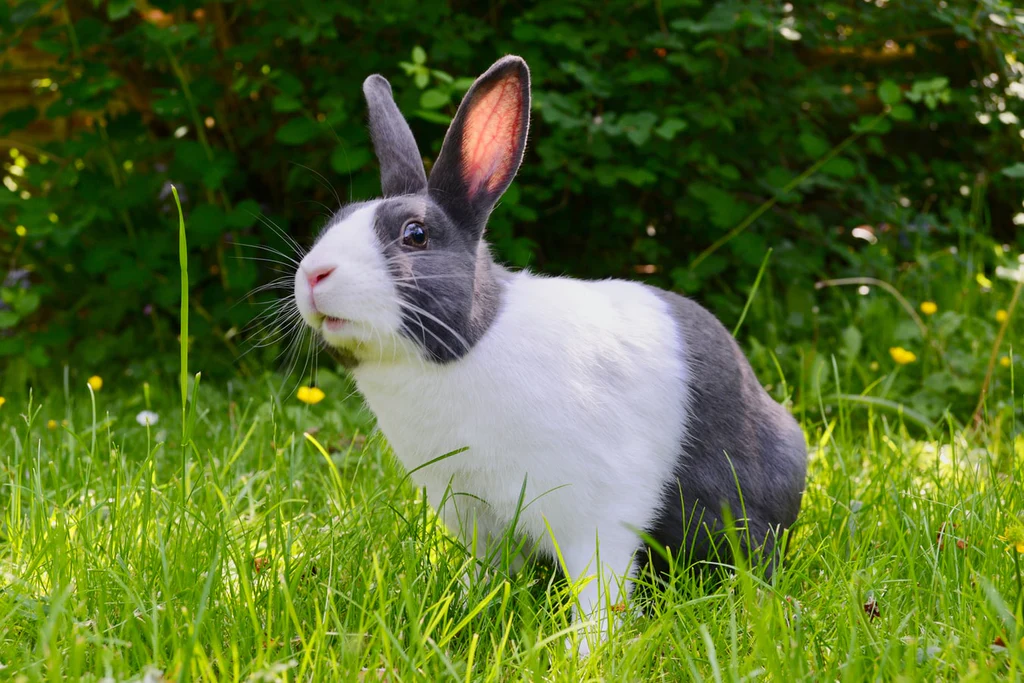
- Origin and History
The Dutch Rabbit is one of the oldest and most recognizable rabbit breeds, originating in the Netherlands during the 19th century. Known for its distinctive two-toned coat pattern, it quickly became a favorite in households and shows.
- Appearance and Size
Dutch Rabbits are medium-sized, weighing about 4–5 pounds. Their iconic markings include a white blaze on their face and a colored body with white legs.
- Temperament and Personality
These rabbits are friendly, gentle, and sociable. They thrive in environments with human interaction and can adapt well to families with children.
- Care Requirements
Daily interaction is essential to keep Dutch Rabbits happy. They’ll do well in a spacious enclosure and diet rich in hay, fresh greens, and rabbit pellets.
- Pros and Cons
- Pros:
- Easy to handle and sociable
- Great for families with kids
- Cons:
- Requires regular grooming
- Not ideal for being left alone for extended periods
- Pros:
2. Mini Rex Rabbit
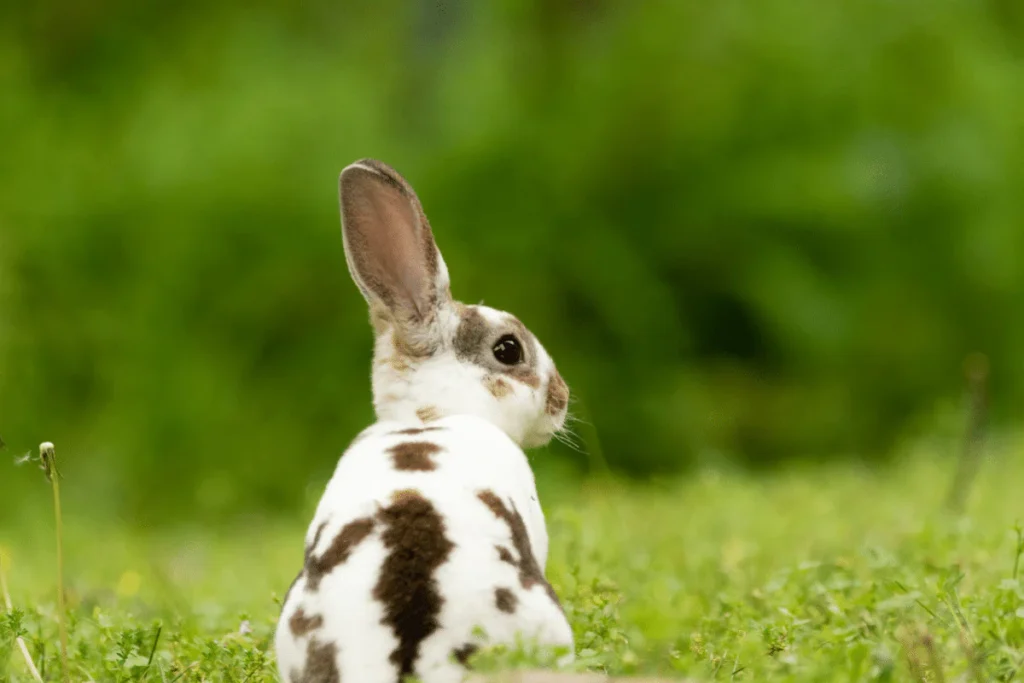
- Origin and History
The Rex gene, responsible for the breed’s plush fur, was discovered in France in 1919. The Mini Rex, a smaller version, was developed in the U.S. during the 1980s and has been a popular pet choice since.
- Appearance and Size
Mini Rex Rabbits are compact, weighing about 3–4.5 pounds. They are known for their velvety fur and come in a variety of colors, from black to chocolate.
- Temperament and Personality
Calm and laid-back, Mini Rex Rabbits are perfect for first-time owners. They enjoy being handled and are known for their curious and playful nature.
- Care Requirements
Their short coat requires minimal grooming, but their diet and exercise needs are similar to other breeds.
- Pros and Cons
- Pros:
- Soft, low-maintenance coat
- Easygoing nature
- Cons:
- May be prone to obesity without proper exercise
- Pros:
3. Lionhead Rabbit
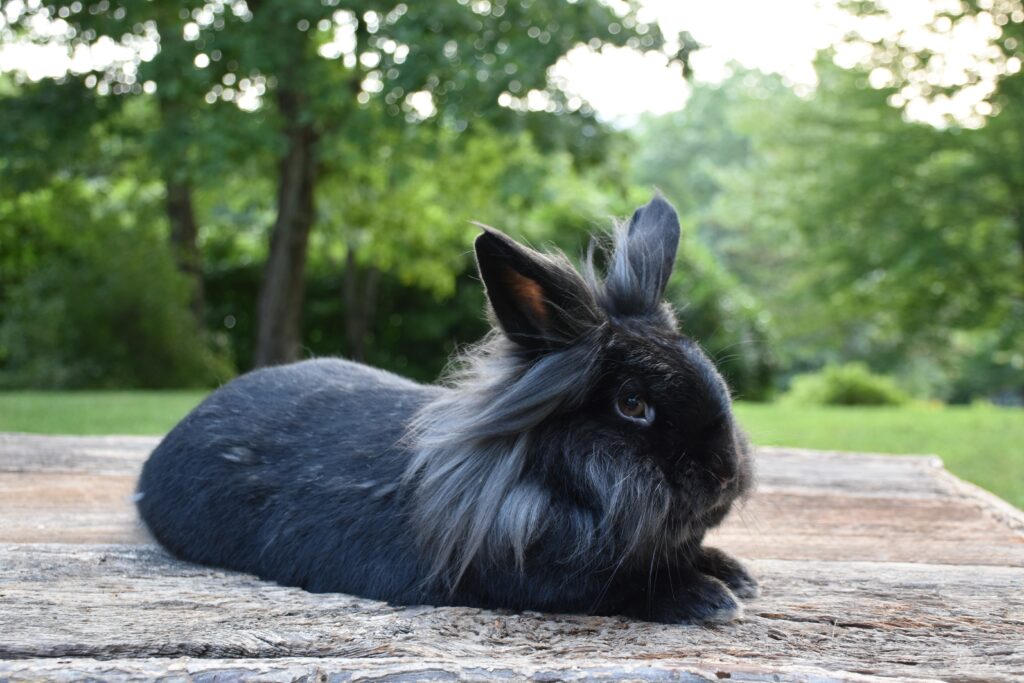
- Origin and History
Lionhead Rabbits emerged fairly recently, originating in Belgium. Their distinctive mane led to their name and immense popularity.
- Appearance and Size
Weighing 2.5–4 pounds, their fluffy “lion’s mane” around the head and neck makes them easily recognizable and utterly adorable.
- Temperament and Personality
Lionheads are affectionate and playful but can be shy at first. They bond well with owners who patiently earn their trust.
- Care Requirements
Their long mane requires frequent grooming to prevent matting. They also need ample space to explore and play.
- Pros and Cons
- Pros:
- Unique, charming appearance
- Fun and curious nature
- Cons:
- High grooming needs
- Pros:
4. French Lop
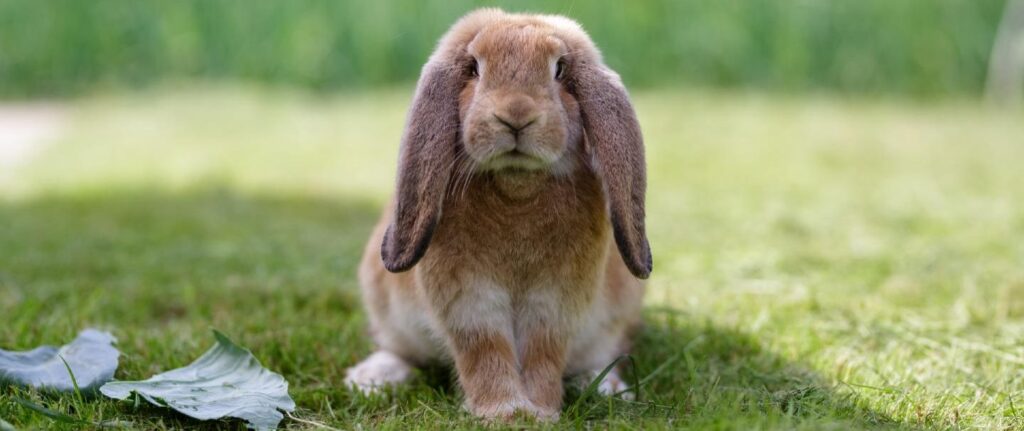
- Origin and History
French Lops were bred in France in the 19th century by crossing English Lops with Flemish Giants. They are among the largest rabbit breeds.
- Appearance and Size
Known for their large size (weighing up to 15 pounds) and floppy ears, French Lops are the gentle giants of the rabbit world.
- Temperament and Personality
Sweet-natured and docile, they’re often described as the “dogs” of the rabbit world due to their love of human interaction.
- Care Requirements
French Lops need a large living space to accommodate their size. They thrive on a balanced diet and lots of enrichment activities.
- Pros and Cons
- Pros:
- Highly sociable and affectionate
- Great for families or individuals
- Cons:
- Require significant space
- Higher food costs due to their size
- Pros:
5. Netherland Dwarf
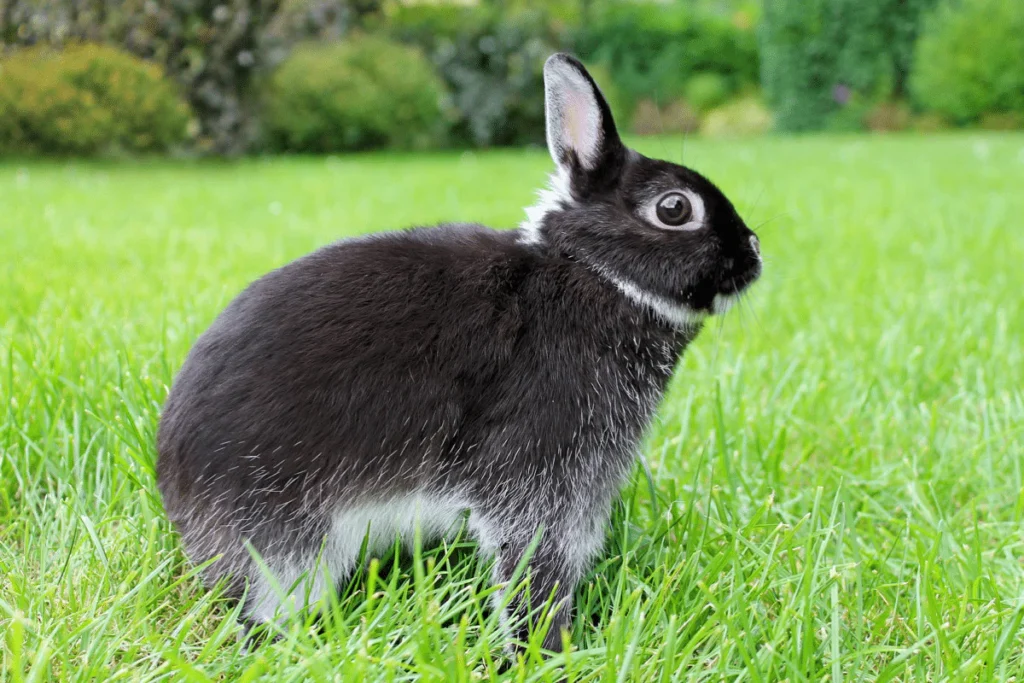
- Origin and History
Originating in the Netherlands, this breed was developed during the early 20th century. It is one of the smallest rabbit breeds.
- Appearance and Size
Tiny and adorable, Netherland Dwarfs weigh only about 1–2.5 pounds. Their big eyes and small “baby-like” faces add to their appeal.
- Temperament and Personality
While energetic and full of personality, Netherland Dwarfs can be a bit shy and reserved, requiring patient handling.
- Care Requirements
Due to their small size, their diet and living space needs are minimal. However, they benefit greatly from regular interaction and stimulation.
- Pros and Cons
- Pros:
- Compact and adorable
- Fits well in small spaces
- Cons:
- Can be timid with novice handlers
- Pros:
Comparison Table of the Top 5 Breeds
| Breed | Weight | Temperament | Grooming Needs | Ideal For |
|---|---|---|---|---|
| Dutch Rabbit | 4–5 lbs | Friendly, gentle | Moderate | Families |
| Mini Rex Rabbit | 3–4.5 lbs | Calm, playful | Low | Beginners |
| Lionhead Rabbit | 5–4 lbs | Affectionate | High | Experienced owners |
| French Lop | Up to 15 lbs | Sociable, docile | Moderate | Families or singles |
| Netherland Dwarf | 1–2.5 lbs | Energetic, shy | Low | Small spaces |
People Also Ask Section
- What is the best rabbit breed for beginners?
Mini Rex Rabbits are often considered ideal for first-time owners due to their calm nature and low grooming needs.
- How much does it cost to own a rabbit?
On average, expect to spend $600–$1,000 per year on rabbit essentials, including food, bedding, and vet visits.
- What do rabbits eat?
A rabbit’s diet consists of hay (80%), fresh vegetables, and a small amount of rabbit pellets.
- How long do rabbits live?
Depending on breed and care, rabbits live 8–12 years on average.
- Are rabbits good pets for children?
Yes, many breeds, like the Dutch Rabbit, are gentle and child-friendly, making them great family pets.
Caring for Your Rabbit
Proper care is critical to your rabbit’s health and happiness. Pay close attention to:
- Housing: Provide a spacious, clean enclosure with safe bedding.
- Diet: Ensure a diet rich in hay, complemented by fresh greens.
- Health: Schedule regular vet visits and watch for signs of illness.
- Socialization: Rabbits thrive on interaction, so make time to bond.
Finding a Reputable Breeder or Rescue Organization
Whether you’re adopting or buying, ethical sourcing matters. Ask breeders about the rabbits’ health history and conditions. Alternatively, consider adopting from rescue organizations to give a rabbit a loving home.
Rediscover the Joy of Rabbit Ownership
Now that you’ve explored the top five rabbit breeds, you’re one step closer to choosing the perfect furry friend. Each breed has its charm, but they all share the potential to bring immense joy into your life. Take time to research and connect with reputable sources to find your ideal companion. Happy bunny hunting!
